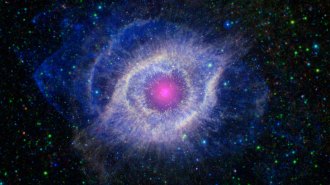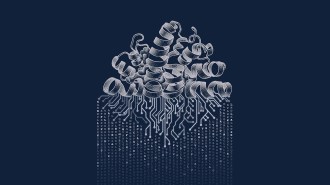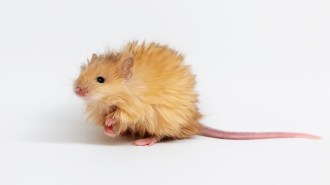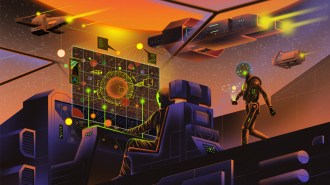All Stories
-
 Health & Medicine
Health & MedicineA new antifungal drug works in a surprising way
Mandimycin, which targets a different essential fungi cell resource than other antifungal drugs, should harm other cell types as collateral — but doesn’t.
-
 Archaeology
ArchaeologyNeandertal-like tools found in China present a mystery
A style of primitive stone tools named for the French site where they were first discovered have shown up half a world away.
By Bruce Bower -
 Climate
ClimateSplitting seawater offers a path to sustainable cement production
Cement manufacture is a huge carbon emitter. A by-product of splitting seawater might make the process more environmentally friendly.
-
 Astronomy
AstronomyA nebula’s X-ray glow may come from a destroyed giant planet
Decades of constant X-ray emission from the Helix Nebula’s white dwarf suggest debris from a Jupiter-sized planet steadily rains upon the star.
-
 Artificial Intelligence
Artificial IntelligenceAI is helping scientists decode previously inscrutable proteins
A new set of artificial intelligence models could make protein sequencing even more powerful for better understanding cell biology and diseases.
-

A new era of testing nukes?
Editor in chief Nancy Shute traces the history of nuclear weapons, from the first sustained nuclear reaction in 1942 to the renewed interest in explosive tests today.
By Nancy Shute -

-
 Earth
Earth3 things to know about the deadly Myanmar earthquake
The magnitude 7.7 earthquake was powerful, shallow and in a heavily populated region with vulnerable buildings.
-
 Genetics
Genetics‘Woolly mice’ were just a start. De-extinction still faces many hurdles
Scientists created transgenic mice with woolly mammoth–like traits. But does it really bring us closer to bringing back woolly mammoths?
By Jason Bittel -
 Space
Space‘Star Wars’ holds clues to making speedier spacecraft in the real world
Controlled fusion, solar sails or ion engines could someday help spaceships travel between star systems.
-
 Quantum Physics
Quantum PhysicsPhysicists are mostly unconvinced by Microsoft’s new topological quantum chip
Majorana qubits could be error resistant. But after a contentious talk at the Global Physics Summit, scientists aren’t convinced Microsoft has them.
-
 Microbes
MicrobesElite athletes’ poop may hold clues to boosting metabolism
In a small study, mice given fecal transplants from elite cyclists and soccer players had higher levels of glycogen, a key energy source.
By Alex Viveros